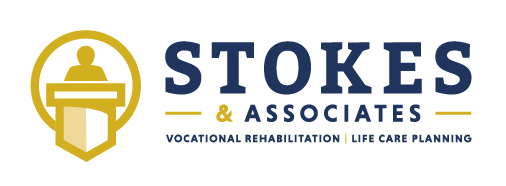Vocational Profile and Alternate Jobs
As vocational consultants, we rely on an individual's vocational profile to analyze the types of alternate jobs they can perform. The vocational profile incorporates multiple factors, including age, education, work history, transferable skills, geographical location, vocational test results (if applicable), and physical/cognitive capabilities or limitations. These factors are analyzed to arrive at a vocational prognosis.
Vocational consultants frequently identify alternate jobs for an evaluee precluded from returning to a position held at the time of the injury. We look closely at the individual's vocational profile to determine the most appropriate, reliable, and realistic alternate jobs that the person can likely perform and are available in the labor market. Essential questions include: Has the person obtained the education requirements for this position? Has the person acquired skills that would transfer to this type of work? Is this type of occupation readily available where this person lives or within a reasonable commutable distance? What are the physical demands of this position, and is the person capable of performing this work?
In addition to these questions, demographic factors can dramatically impact the overall vocational prognosis when assigning alternate jobs. Take, for example, age. An individual's age drives work-life expectancy, which describes the likely time period one can expect to generate realistic earnings when returning to the workforce. For example, if a woman is 25 years old, she will likely have the opportunity to increase earning potential with time, experience, or additional training, which would upgrade her vocational prognosis. On the other hand, if she is 65 years old, she will likely be limited in her time in the labor market and may not reach the potential to earn above starting wages in alternate occupations.
Another vital element of the vocational profile that affects alternate jobs is work history. In vocational rehabilitation, the goal is to return the injured worker to the same or accommodated position with the same employer. If not possible, we look for the same or similar job with a different employer. If that is not possible, we look for related jobs in the same field. And finally, we consider new jobs in a new field. This hierarchy reasons that it will take less time to transition if the new or alternate job more closely approximates the position at the time of injury.
To determine this trajectory, we look to work history. We can glean a trove of information from someone's work history, but most importantly, we can identify the transferable skills they have acquired along their vocational journey. These skills are the key to matching the worker to a suitable alternative job.
To strategize with one of our vocational rehab or life care plan experts at Stokes & Associates, please call David Barrett at 504-454-5009, visit our website, www.stokes-associates.com, or e-mail dbarrett@stokes-associates.com.
Larry S. Stokes, Ph.D.
Aaron Wolfson, Ph.D.
Lacy Sapp, Ph.D.
Todd Capielano, M.Ed., LRC, CRC, LPC, CLC
Ashley Lastrapes, MHS, CRC, CCM, CLCP, LPC, LRC
Brandy Bradley, MHS, CRC, LRC, CLCP
Elizabeth Peralta, M.Ed., LRC, CRC, CLCP
